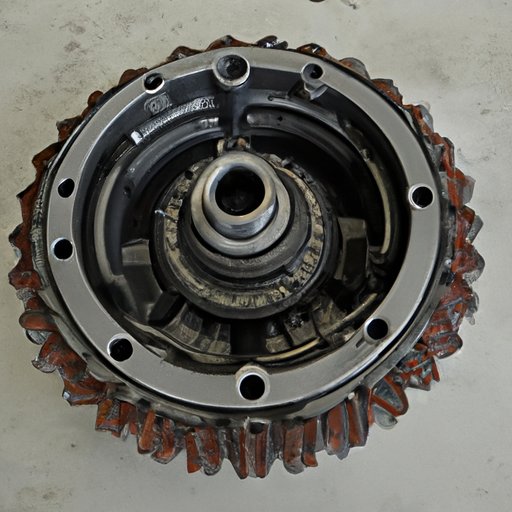Introduction
The differential is an essential component in any car’s drivetrain. It is responsible for transferring power from the engine to the wheels and it allows vehicles to corner and turn smoothly. But what exactly is a differential and how does it work? This article will explore the mechanics of differentials, their components, and common problems and solutions.
Exploring the Mechanics of Differentials
A differential is a set of gears designed to transmit power from the engine to the wheels while allowing them to turn at different speeds. This is necessary because when a car turns a corner, the outside wheel has to travel farther than the inside wheel and therefore needs to rotate faster. Without a differential, the wheels would be forced to rotate at the same speed, resulting in uneven tire wear, reduced traction, and a bumpy ride.
Types of Differentials
There are several types of differentials used in cars today. The most common type is the open differential, which is found in most cars and SUVs. Open differentials are reliable and inexpensive, but they are not ideal for off-road driving as they can cause one wheel to spin if the other loses traction. Limited-slip differentials are a better choice for off-roading as they distribute torque more evenly between the wheels, providing better traction.
How Differentials Help Power a Vehicle
Differentials are an integral part of a vehicle’s drivetrain and are responsible for transferring power from the engine to the wheels. The differential takes the rotational energy produced by the engine and converts it into linear motion, allowing the wheels to turn at different speeds when cornering. This helps to ensure a smooth ride and reduces tire wear.
Differential Components and Their Functions
Differentials are composed of several components, each of which plays an important role in the operation of the unit. The pinion gear is connected to the driveshaft and transfers power from the engine to the differential. The side gears are connected to the axle shafts and transfer power to the wheels. Lastly, the spider gears allow the side gears to turn at different speeds when cornering.
Differential Troubleshooting Tips
Differentials require regular maintenance to keep them running smoothly. Common problems include excessive noise, vibration, or slippage, all of which can lead to decreased performance and increased wear on the drivetrain components. To prevent these issues, be sure to check the fluid level regularly, replace worn out parts, and inspect the differential for signs of damage.
Common Problems and Solutions
If you experience any issues with your differential, the first step is to identify the source of the problem. For example, if you hear a whining noise, it could be caused by low fluid levels or worn out bearings. If you notice that the vehicle is slipping or vibrating, it could be due to worn out clutches or leaky seals. Once you have identified the problem, you can take steps to repair or replace the damaged part.
Understanding the Impact of Differentials on Performance
Differentials play an important role in the performance of a vehicle. A well-maintained differential will provide smoother shifting, improved traction, and increased fuel efficiency. On the other hand, a worn out or damaged differential can lead to decreased performance and increased wear on the drivetrain components.
Conclusion
Differentials are an essential component of any car’s drivetrain, allowing the wheels to turn at different speeds while cornering. There are several types of differentials available, each with its own set of components and functions. Properly maintaining a differential is essential for optimal performance and fuel efficiency. Regular inspections and preventive maintenance can help to ensure that your differential continues to operate at its best.
(Note: Is this article not meeting your expectations? Do you have knowledge or insights to share? Unlock new opportunities and expand your reach by joining our authors team. Click Registration to join us and share your expertise with our readers.)
